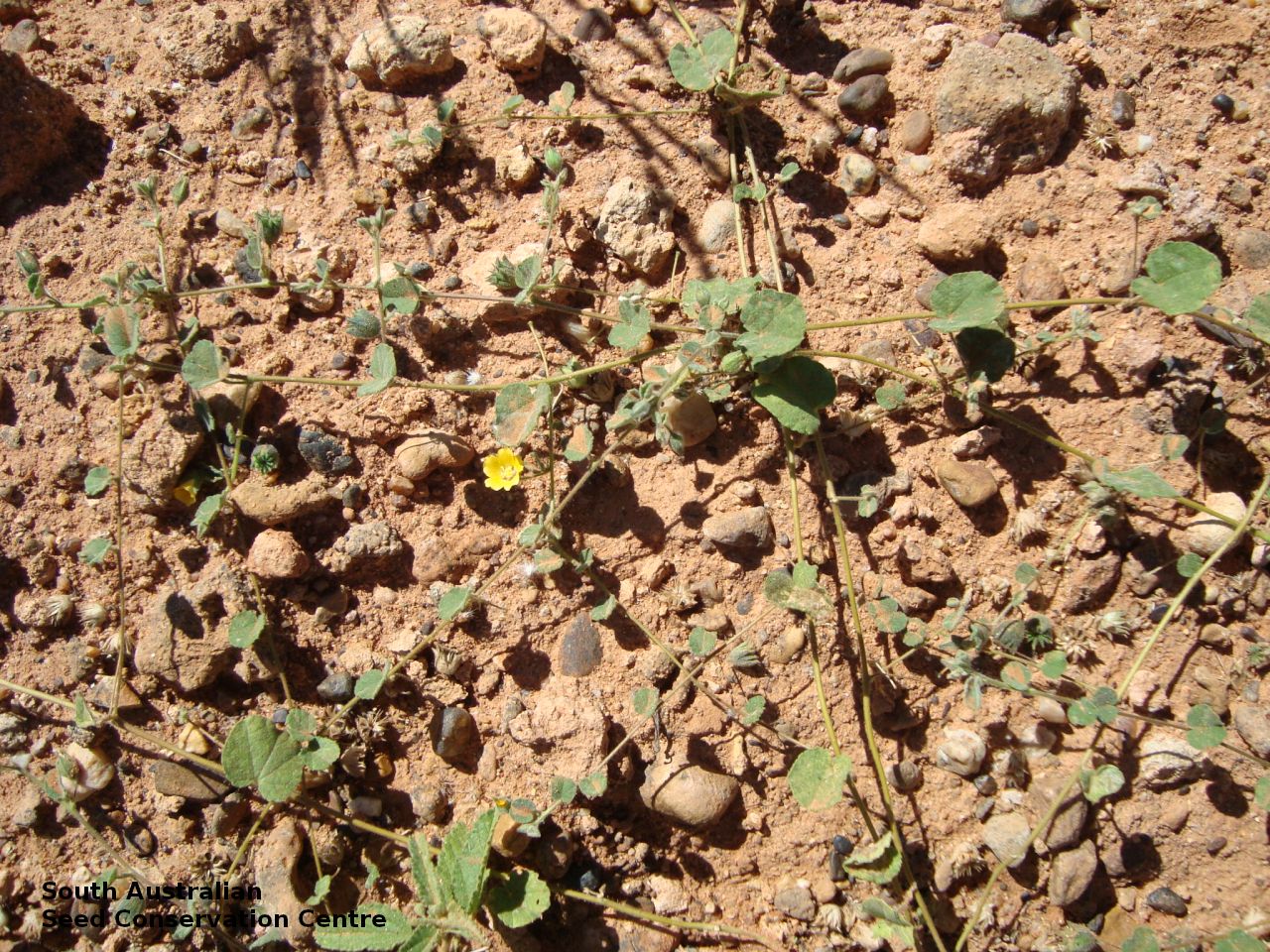


Etymology
Abutilon from the Arabic 'aubutilun' used for mallow-like plant and quoted by the Arabian physician Avicenna as belonging to this or some allied genus. Oxycarpum from the Greek 'oxys' meaning sharp and 'karpos' meaning fruit; referring to the short erect awns on the fruit capsules.
Distribution and status
Few records from the Eyre Peninsula and the northern part of South Australia, growing on rocky hill slopes and on creek banks. Also found in Queensland and New South Wales. Native. Rare in South Australia. Common in the other states.
Herbarium regions: Lake Eyre, Eyre Peninsula
NRM regions: Eyre Peninsula, South Australian Arid Lands
AVH map: SA distribution map (external link)
Plant description
Small slender herbs or small shrubs to 90 cm high, covered with stellate hairs and longer spreading hairs on the branches. Leaves hairy on both surfaces, acuminate, ovate lanceolate with blade to 9 cm long. Inflorescence on a long stalk exceeding the leaves with yellow flowers, calyx about half as long as the capsule. Differ from then other subspecies found in South Australia, Abutilon oxycarpum var. incanum which has broadly and shallowly crenate or almost entire, cordate, orbicular or broad-ovate leaves to 10 cm long and capsule much longer than the calyx, to 2 cm diameter and composing of 10-15 segments. Flowering between January to April. Fruits are brown papery capsule twice as long as the calyx, to 8 mm diameter, with 10 or fewer segments, each with 2 short spreading-erect awns. Seed embryo type is folded.
Seed collection and propagation
Collect seeds between March and June. Collect mature capsules, those that are turning pale straw colour and contain hard brown seeds. Place the capsules in a tray and leave to dry for two weeks. Then rub the capsules gently by hand to dislodge the seeds. Use a sieve to separate the unwanted material. Store the seeds with a desiccant such as dried silica beads or dry rice, in an air tight container in a cool and dry place. This species has physical dormancy that needs to be overcome for the seed to germinate (e.g. nicking or softening the seed coat).